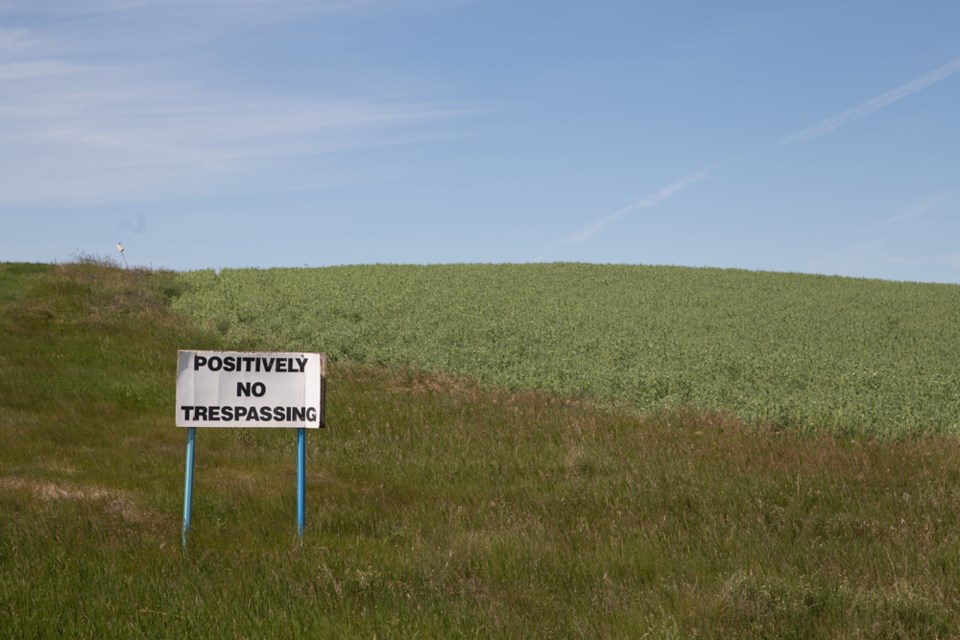SASKATOON — The Treaty Land Sharing Network initiative was launched last year to build relationships between landowners — farmers and ranchers — and Indigenous communities to allow the latter the right to access the land for gathering plants, hunting and 小蓝视频, as prescribed by treaty.
TLSN is an alliance between farmers, ranchers, landholders and Indigenous land users with the goal of honouring the treaties by sharing the land, welcoming First Nation and Métis peoples to access the land and practise their way of life. About 4,000 acres of land across the province are currently under the network.
Joel Mowchencko, who farms near Mossbank and a TLSN member, said the network taught him more on the issue of land sharing and connecting with other members and land users.
“Through my time with the Treaty Land Sharing Network, I've been able to learn much about the treaties and about the picture they painted of what sharing the land could look like,” Mowchencko told SASKTODAY.ca.
“I've also been able to build relationships with several Indigenous land users. This relationship-building feature and the ability to foster connections is one of the greatest features of the network,” he added.
The gains achieved by the TLSN, however, face a possible threat as Saskatchewan’s new trespassing legislation — The Trespass to Property Act 2021 — is a roadblock to Indigenous Peoples practising their culture and way of life.
The law states that permission must first be obtained for a landholder to gain access to the land. Those who access the land without permission can be subjected to fines of up to $25,000 or a six-month jail term.
TLSN, in a statement, said Indigenous peoples have the right to access the land and move freely in their territories as affirmed by the numbered treaties signed.
“[It] is fundamental to other inherent treaty rights including hunting, trapping, gathering and practising 小蓝视频 and culture. By undermining access to land, the amendment threatens Indigenous food sovereignty, language revitalization and Indigenous relationships and responsibilities to the land,” the group said.
“Although [TLSN] recognizes that rural people have real concerns about their safety and harm to the lands and animals they steward, members believe the amended trespassing legislation will only create more problems, rather than solutions.”
TLSN added the legislation makes land inaccessible and would continue liquidation of publicly-owned Crown lands. The Saskatchewan government has sold nearly two million acres since 2007. These Crown lands sold were previously owned by the people of the province and almost 85 per cent of land in 小蓝视频ern Saskatchewan is now privately owned or leased with terms that exclude public access.
Mowchenko said TLSN landowners must now work together to implement and better understand what the treaties state and learn the rights of Indigenous peoples.
“We all need to do more to honour the treaties and uphold our end of things. I feel this legislation is a definitive step in the wrong direction.”
He added that TLSN’s goal is to continue building relationships between landholders and land users, and increasing awareness of the network with the help of various Indigenous organizations, First Nations and tribal councils.
“We also hope to host more land-sharing events this summer on specific farms in the network so that people have an opportunity to see the land in person and meet some of the people involved,” said Mowchenko.
He added that TLSN is a group formed to help Indigenous peoples practice the same way of life that their ancestors used to do.
“The mandate of the network is to encourage land sharing and expand safe access to land for Indigenous people practicing their way of life. I do not believe it is the role of the network to be a watchdog of the province, but rather to seek a different way forward for rural Saskatchewan that is grounded in honouring our treaty agreements,” he said.
Mary Smillie, a landholder and farmer in Bladworth, told SASKTODAY she appreciates the learning experience of 小蓝视频 a part of TLSN.
“I’ve come to appreciate the incredible opportunity to learn about the land we farm by sharing it with Indigenous land users.
“I honestly believe our best way forward as Canadians is to recognize and practise land sharing in the ways the treaties intended based on the principles of mutual recognition, mutual respect and shared responsibility for these relationships into the future.”
She added the network will continue creating conditions where more land sharing would be possible and practiced.
“Reducing barriers to sharing land is our primary objective.
“We do this by raising awareness of what 小蓝视频 treaty people means, the opportunities to practice treaty and creating conditions where more people – both non-Indigenous and Indigenous people – can experience firsthand what reconciliation through land sharing can be.”



